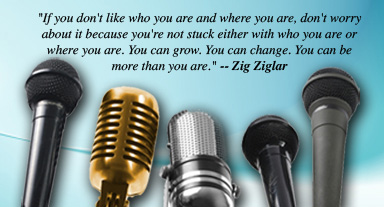We’ve already talked about how to make a good first impression on your audience and how to not distract your audience while you’re speaking. So what’s next when it comes to speaker-audience interactions?
Audience engagement!
Keeping an audience’s attention is more difficult than ever in our fast-paced digital world. Today’s audiences require a lot of stimulation. So one of the best ways to really connect with your audience – and to keep their focus on you and your message – is to engage them through audience participation and interaction.
The simplest way of getting your audience to participate and interact is to have them ask questions. But make sure they know how – and when – you want them to do it. If it’s OK for them to ask you questions throughout your presentation, let them know right away. The sooner the better! Otherwise they may be too nervous (or too polite) to interrupt you. If you’d prefer they save their questions till the end of the presentation, that’s fine too. But you may want to provide them with pens and paper so they can jot their questions down as they think of them.
Allowing questions is important, but sometimes your audience just won’t bite. So why not turn things around and ask them some questions instead. You can start simple by making sure they understand the concepts you’re speaking about. For example, if you’re talking about bullying, ask the audience how they would define a bully. You can have them raise their hands to answer the question, or have them just shout out the characteristics or traits they think belong to bullies.
If you’re telling a story or sharing a personal anecdote, you may want to ask audience members to share an experience where a similar thing happened to them. For example, you could ask them to share an experience of being bullied in the workplace. Talking about shared experiences is a guaranteed way of creating an immediate connection with your audience.
It’s inevitable: While you’re speaking you’re bound to hear the tapping of laptop keyboards or see the glow of smartphone screens while people text and check messages. Don’t despair. Take advantage of your audience’s technical prowess by asking them to tweet while you talk. Provide them with a Twitter hashtag related to your subject matter and encourage them to tweet their questions and insights. Sure you’ll still hear them typing and texting, but you’ll at least know they’re talking about you! By the end of your presentation you’ll have a whole Twitter feed of related material that you can share and respond to. Plus, you’ll have a slew of new Twitter users to follow and connect with.
There are many more ways of encouraging audience participation and interaction. Depending on the size of the group and the amount of time you have, you may want to have them take part in small-group discussions or even physical activities. The options are really endless.
Do you have any tips on how to encourage audience interaction? Share them here or on our Facebook page.
And be sure to check out our teleseminar resources, too. We have a great one by best-selling author Cliff Atkinson titled “Is Twitter a Presenter’s Nightmare or a Dream Come True?” (scroll down to the sixth teleseminar on the page) where he discusses how Twitter is revolutionizing how audiences interact during presentations.
Some other good teleseminars you should consider having a look at are:
• “Audience Involvement Strategies for Involuntary, Cynical and Non-Participatory Attendees” by ethics expert Frank Bucaro (scroll down to the second teleseminar on the page)
• “Keep ’Em Engaged and Attentive: Having Effective Interactivity in Every Program” by corporate motivator and presentation coach Izzy Gesell (scroll down to the ninth teleseminar on the page)
• “How to Generate Big Laughs by Interacting With Audience Members Without Embarrassing Them – Or You” by corporate humourist, strategist and funny-ist Brad Montgomery (scroll down to the eighth teleseminar on the page)
Enjoy!


